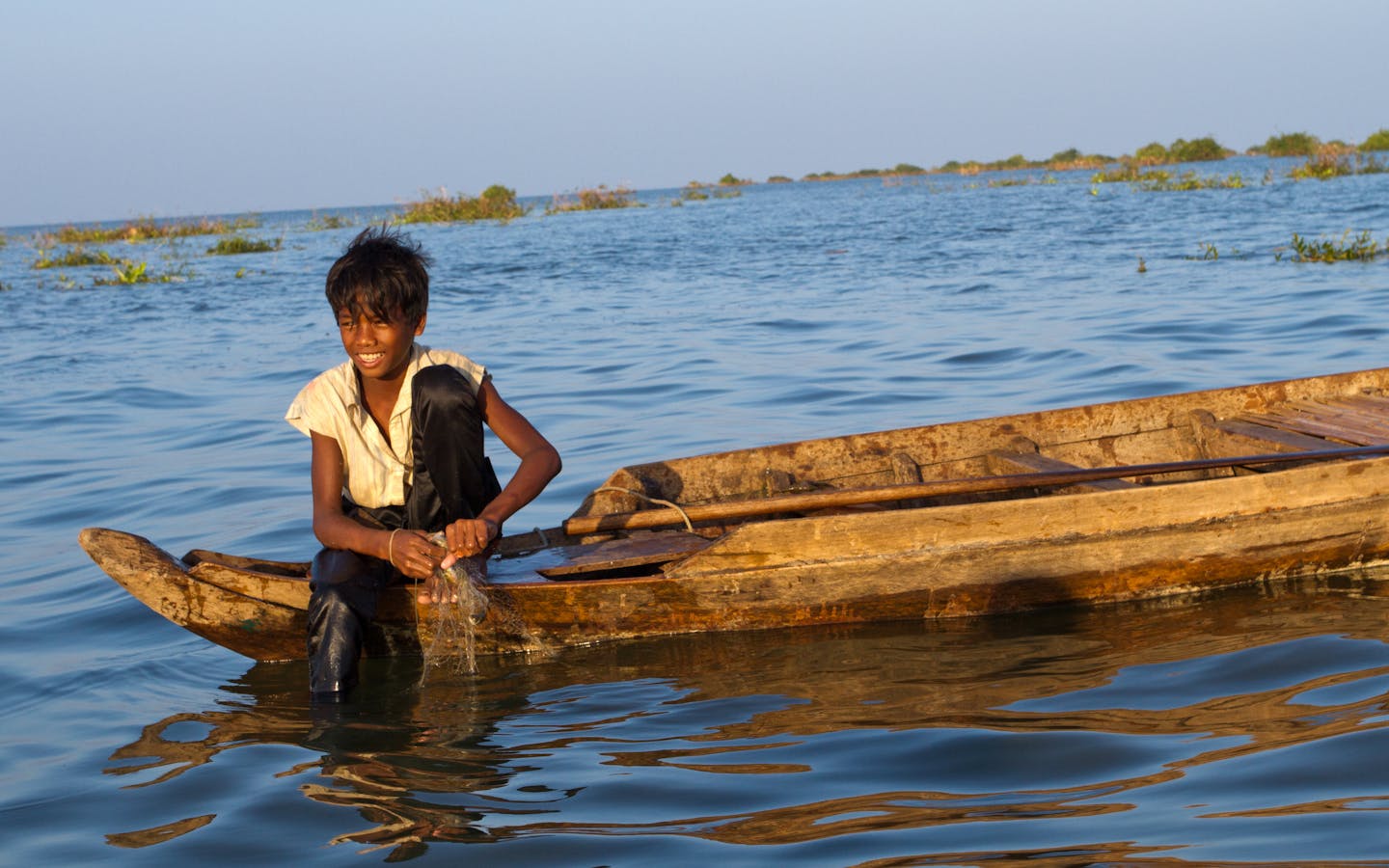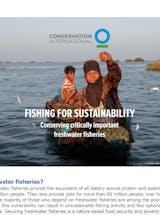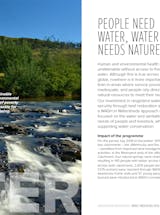Reports on the state of the world’s freshwater ecosystems sound a single refrain: humanity is facing a water crisis.
Researchers project that by 2030 the demand for water could outstrip supply by 40 percent. And severe floods and droughts caused by climate change are only exacerbating the problem.
Although climate change and the water crisis are linked, tackling these issues requires a different set of strategies, according to Derek Vollmer and Ian Harrison, freshwater scientists at Conservation International.
In a recent paper, they argue that countries and companies looking to improve water security should steer clear of global goals and instead focus on addressing impacts closer to home — in specific watersheds and communities.
Conservation News spoke to Vollmer about the key differences between the climate crisis and the water crisis — and why we must tap into different solutions for each.
Question: How does the climate crisis affect water insecurity around the world?
Answer: Two of our most pressing environmental issues, climate change and water insecurity, overlap in many ways. Climate change is already affecting rainfall levels around the world, resulting in extended droughts in the Middle East and severe floods in the United Kingdom. And, like climate change, water scarcity disproportionately affects poor communities. Without clean water, diseases spread more easily; conflict and displacement can arise.
Despite these similarities, we found that borrowing from the climate action “playbook” is not the most effective way to address the water crisis. The same place can suffer from too much or too little water in the span of a year. And water insecurity means more than just a lack of water — it’s also about the quality and access to that water. Finally, the way a watershed is managed can have a profound impact on freshwater biodiversity, which has dropped in recent years as habitats shrink due to urban and agricultural development. These conditions can vary widely from one place to another and require a local response.
Q: So you’re saying that climate change and the water crisis must be addressed very differently?
A: Exactly. Many of the global strategies for tackling climate change will not work for conserving watersheds. Take the Paris Agreement: Under the landmark climate pact, countries committed to a single goal — limiting global warming to 1.5 degrees Celsius (2.7 degrees Fahrenheit) by curbing greenhouse gas emissions. That makes sense because a reduction of emissions in one country benefits others and countries must work together to be effective. For the water crisis, it is much more difficult to come up with a global goal because the amount of water on the planet is very unevenly distributed, and saving water in one place doesn’t benefit another.
This also means that you can’t look at a “water footprint” in the same way as a “carbon footprint.” Calculating how much water a company or individual uses is not as valuable as measuring the carbon emissions they release. That’s because a key element is usually missing: the source of that water. Some ecosystems around the world have plenty of water to spare, so using their water liberally is not as harmful as it might be for an ecosystem with little rainfall. Simply calculating a person or company’s water use overlooks the local conditions, which determine how water use impacts the environment, livelihoods and human health — therefore providing little practical value to decision-makers.
Q: What should people do instead to track their impact on freshwater ecosystems?
A: Ending the water crisis starts in your back yard. Acting locally to address water issues is a far more effective conservation strategy than setting broad global targets, such as those designed to prevent catastrophic global warming. Many companies have committed to offsetting their water usage by replenishing that amount somewhere else in the world. Instead, they should improve freshwater health in their own watersheds, by understanding the local challenges and working with other stakeholders to design lasting solutions. Rather than investing in far-flung projects that simply add up the “gallons saved,” companies should support local efforts in their specific watersheds through wetlands restoration projects or community-based management of protected areas.
Q: Are there any tools that can help them do this?
A: Yes, one tool is called the Freshwater Health Index (FHI). Developed by Conservation International scientists, the FHI aims to help governments, communities and businesses better analyze the benefits and risks of human activities — such as developing dams or increasing agriculture — before making big water-related decisions. Using ecological data and surveys from local communities, the Index can help businesses and governments identify vulnerabilities within a basin and make more informed choices to conserve it.
For example, Conservation International is currently working with provincial government agencies and universities to conduct the first-ever FHI assessment for China’s Poyang Lake basin, which is home to two internationally important wetlands and supports the jobs of more than 45 million people. In partnership with sustainable textile company Sateri, this work is helping identify local priorities for freshwater conservation and strengthening community-managed nature reserves to combat wetland degradation.
Once stakeholders understand the ecological and social contexts of a freshwater ecosystem, they can start making investments that will have the greatest conservation benefits. There isn’t going to be a single solution, but taking this approach is more likely to improve the health of the watershed, benefitting people and nature.
Further reading
- For billions without clean water, ‘wash your hands’ is complicated
- Trove of new species discovered in hidden Bolivian valley
- Study: COVID-19 jeopardizing world’s protected areas
Kiley Price is a staff writer at Conservation International. Want to read more stories like this? Sign up for email updates. Also, please consider supporting our critical work.















